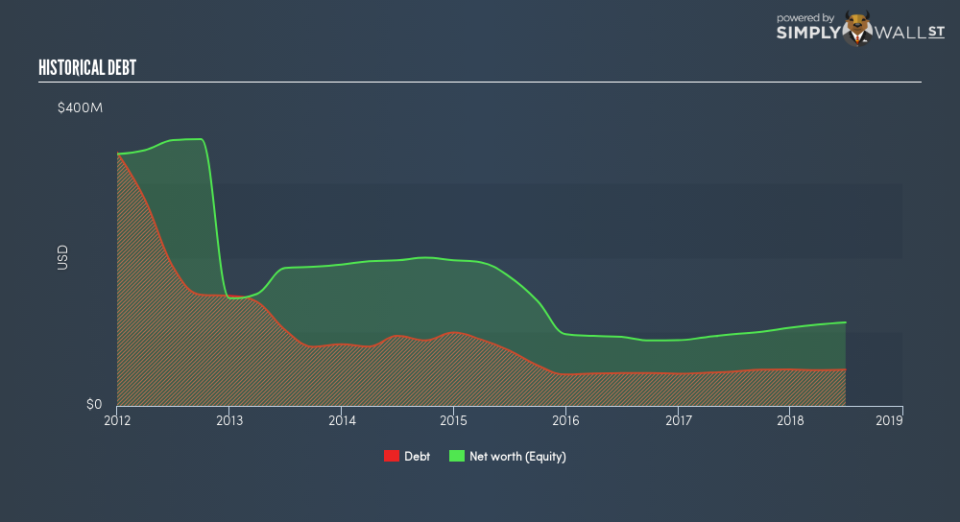Is 5N Plus Inc’s (TSE:VNP) Balance Sheet A Threat To Its Future?

Investors are always looking for growth in small-cap stocks like 5N Plus Inc (TSE:VNP), with a market cap of CA$293.3m. However, an important fact which most ignore is: how financially healthy is the business? Evaluating financial health as part of your investment thesis is crucial, as mismanagement of capital can lead to bankruptcies, which occur at a higher rate for small-caps. I believe these basic checks tell most of the story you need to know. However, I know these factors are very high-level, so I suggest you dig deeper yourself into VNP here.
Does VNP produce enough cash relative to debt?
VNP’s debt levels surged from US$46.3m to US$48.9m over the last 12 months – this includes both the current and long-term debt. With this increase in debt, the current cash and short-term investment levels stands at US$29.0m , ready to deploy into the business. Moreover, VNP has generated US$3.2m in operating cash flow over the same time period, resulting in an operating cash to total debt ratio of 6.6%, meaning that VNP’s current level of operating cash is not high enough to cover debt. This ratio can also be interpreted as a measure of efficiency as an alternative to return on assets. In VNP’s case, it is able to generate 0.066x cash from its debt capital.
Does VNP’s liquid assets cover its short-term commitments?
With current liabilities at US$79.1m, it appears that the company has maintained a safe level of current assets to meet its obligations, with the current ratio last standing at 2.07x. Generally, for Chemicals companies, this is a reasonable ratio since there’s sufficient cash cushion without leaving too much capital idle or in low-earning investments.
Is VNP’s debt level acceptable?
VNP is a relatively highly levered company with a debt-to-equity of 43.5%. This is not unusual for small-caps as debt tends to be a cheaper and faster source of funding for some businesses. We can test if VNP’s debt levels are sustainable by measuring interest payments against earnings of a company. Ideally, earnings before interest and tax (EBIT) should cover net interest by at least three times. For VNP, the ratio of 2.38x suggests that interest is not strongly covered, which means that debtors may be less inclined to loan the company more money, reducing its headroom for growth through debt.
Next Steps:
VNP’s debt and cash flow levels indicate room for improvement. Its cash flow coverage of less than a quarter of debt means that operating efficiency could be an issue. However, the company exhibits proper management of current assets and upcoming liabilities. I admit this is a fairly basic analysis for VNP’s financial health. Other important fundamentals need to be considered alongside. I recommend you continue to research 5N Plus to get a more holistic view of the stock by looking at:
Future Outlook: What are well-informed industry analysts predicting for VNP’s future growth? Take a look at our free research report of analyst consensus for VNP’s outlook.
Valuation: What is VNP worth today? Is the stock undervalued, even when its growth outlook is factored into its intrinsic value? The intrinsic value infographic in our free research report helps visualize whether VNP is currently mispriced by the market.
Other High-Performing Stocks: Are there other stocks that provide better prospects with proven track records? Explore our free list of these great stocks here.
To help readers see past the short term volatility of the financial market, we aim to bring you a long-term focused research analysis purely driven by fundamental data. Note that our analysis does not factor in the latest price-sensitive company announcements.
The author is an independent contributor and at the time of publication had no position in the stocks mentioned. For errors that warrant correction please contact the editor at editorial-team@simplywallst.com.

